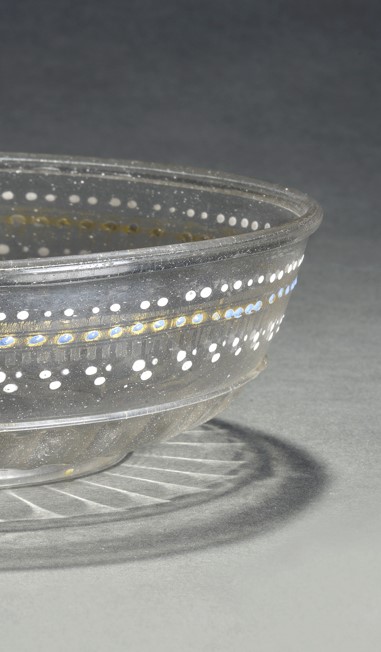
Enameled bowl on foot
Bowl on foot with enamel and gold leaf decoration. Cristallo or vitrum blanchum with a hint of grey, enamels and gold leaf. Venice. Wide shallow bowl. Trumpet-shaped foot with a downwardly folded rim. Double pontil mark.
Decoration:On the outside of the glass along the border an enamelled gold leaf decoration in a horizontal band. The gold leaf has been decorated by scratching away the gold to create a pattern comprising two rows of scales under and above four horizontal lines. Each scale is further adorned with bi-coloured enamelled dots in red and white. Blue enamelled dots feature on the lines and the gold in between. Above and below the gold a line of bicoloured red-white dots.
In the center of the plate is an enamelled gold decoration. A rosette with a circle in the centre with three rows of six circles around it is scratched away in the gold. With each row the Ø of the circle becomes larger. The room inbetween the last six circles is filled with a 45-degree angle.
The outlines of each circle and the angles are depicted in white enamelled dots. Every circle contains alternating large blue and red dots. The circle in the middle has a red dot. The angles are crowned with three blue dots in the shape of a triangle.
The gold on the side the plate was painted has been worn away. As is customary it remains only vaguely visible. However, looking from the reverse side of the plate, it becomes clear how bright and vivid the gold originally must have been: under the enamelled dots the gold is very strong and brilliant.
The upper side of the underfolded rim is gilded.
The scales along the border comprise one of the favourite types of decoration used for such gold enamelled glasses. The rosette in the plate’s centre, that like other decorations on the same spot serves to cover up the double pontil marks (cache misère), is also a decorative element that features on other plates of the same era, Examples include a ribbed plate held by the Museum Angewandte Kunst in Frankfurt am Main (Germany) (Bauer & Gabbert 1980, cat.no. 120) and a small blue bowl in the Robert Lehman collection held by New York’s Metropolitan Museum of Art (Lanmon & Whitehouse 1993, cat.no. 9). The only other tazza with a plain bowl and the decoration on the plate discussed here, is also contained in the collection of Frankfurt am Mains Museum Angewandte Kunst (Bauer & Gabbert 1980, cat.no. 121).




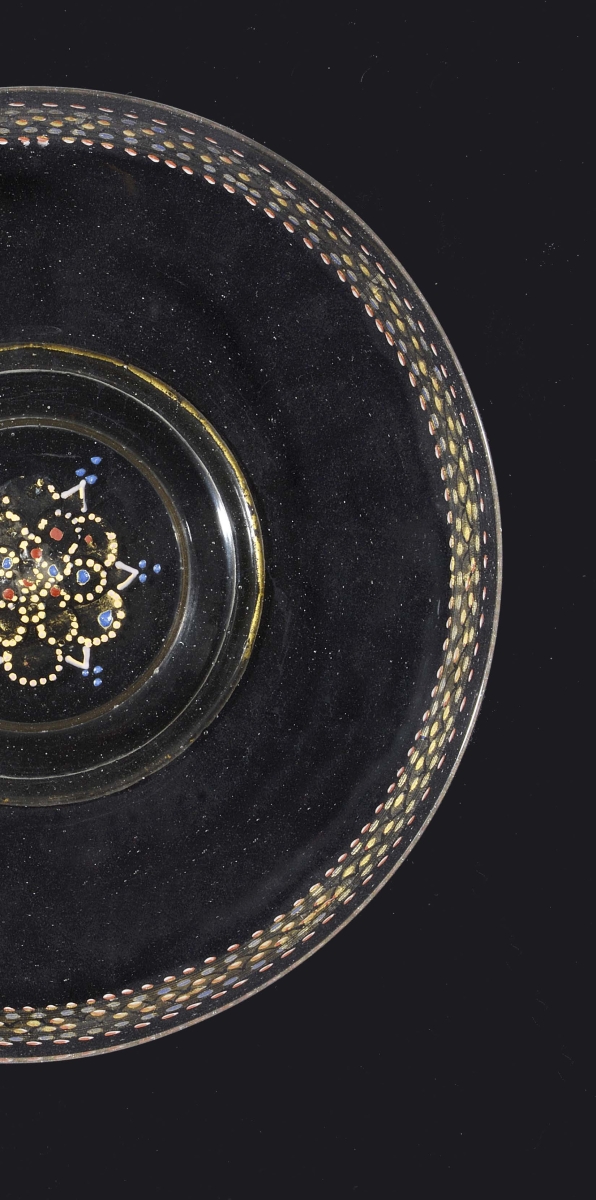
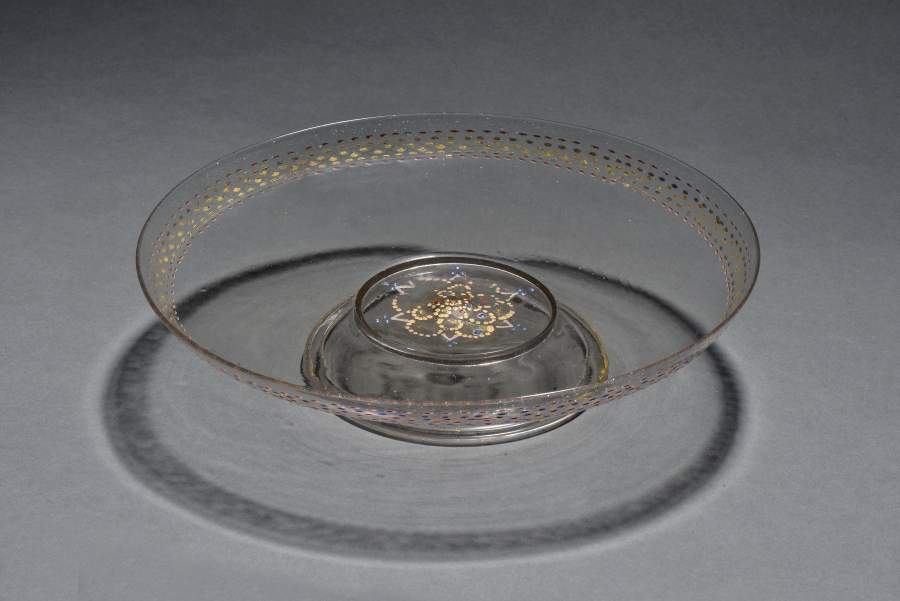
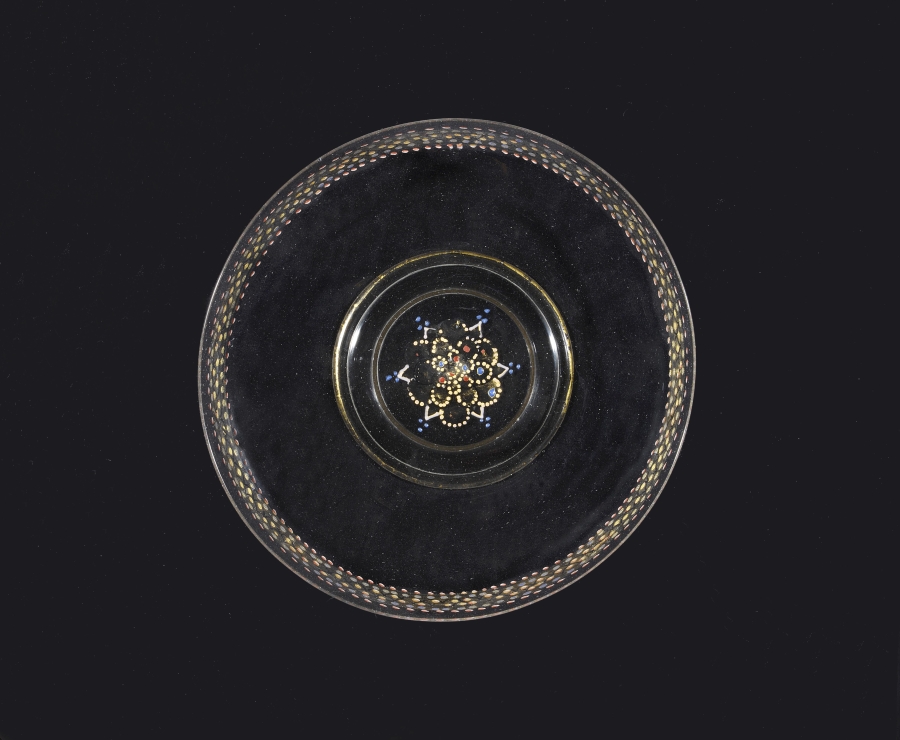
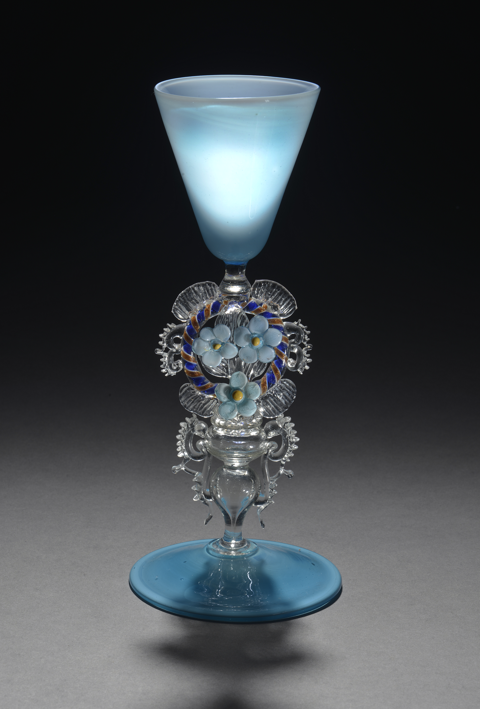



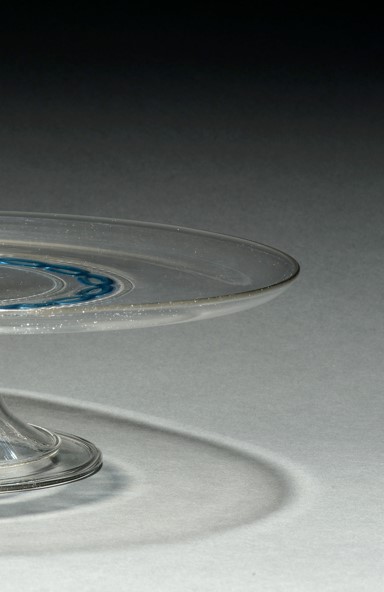
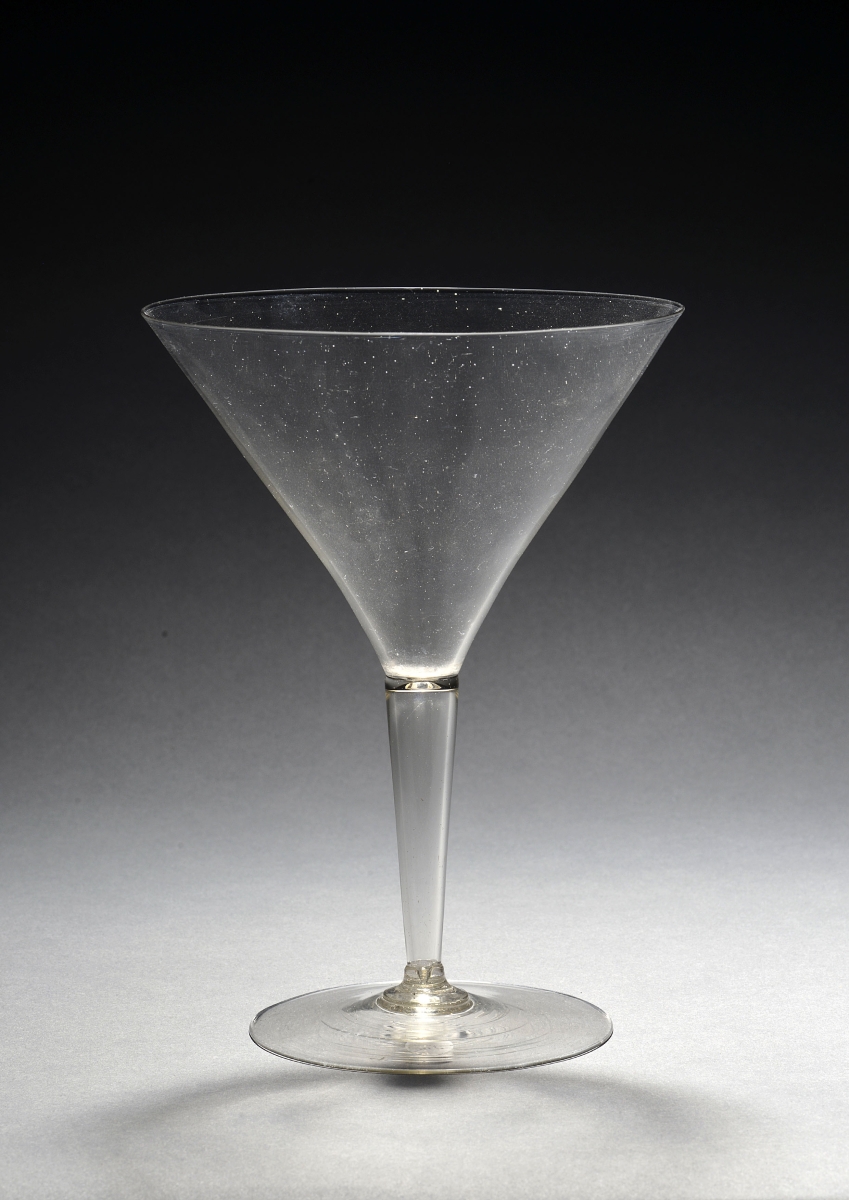
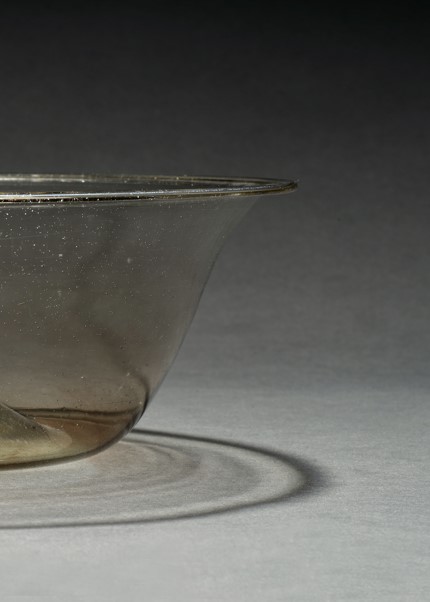
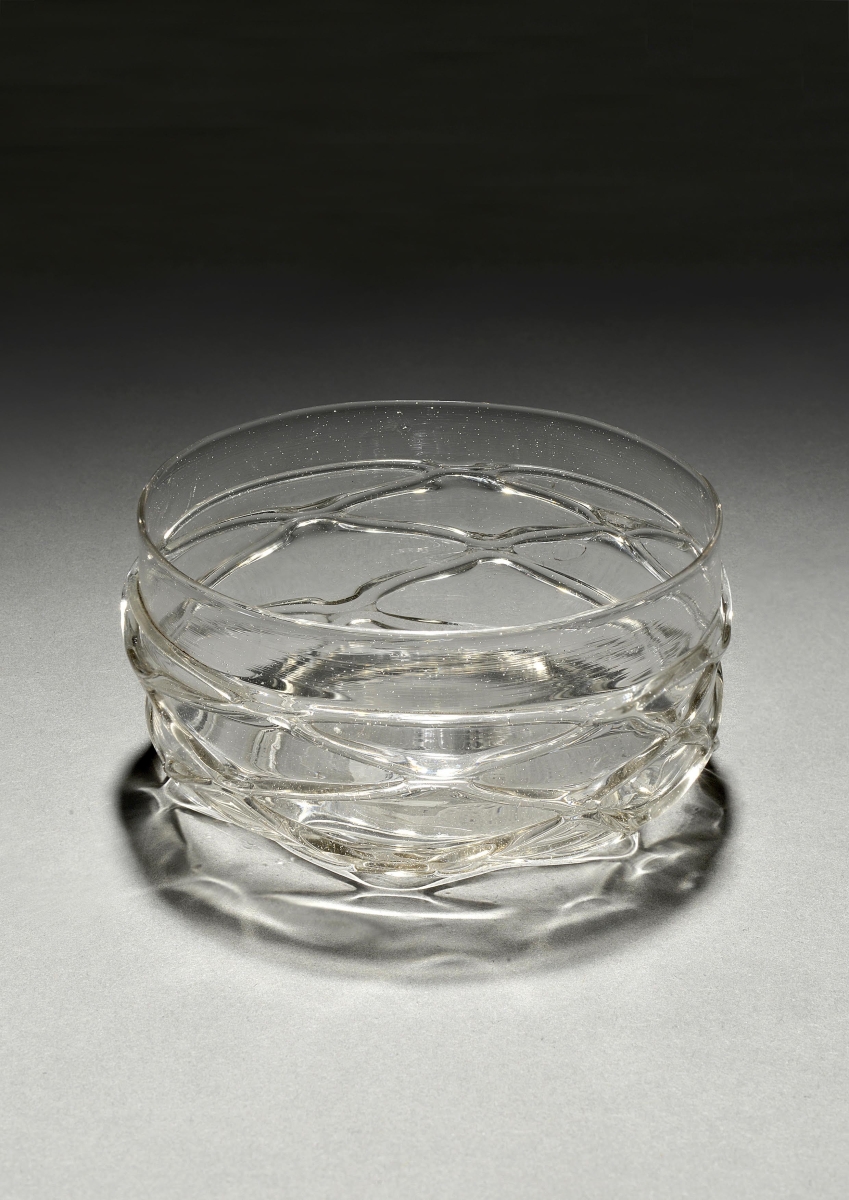
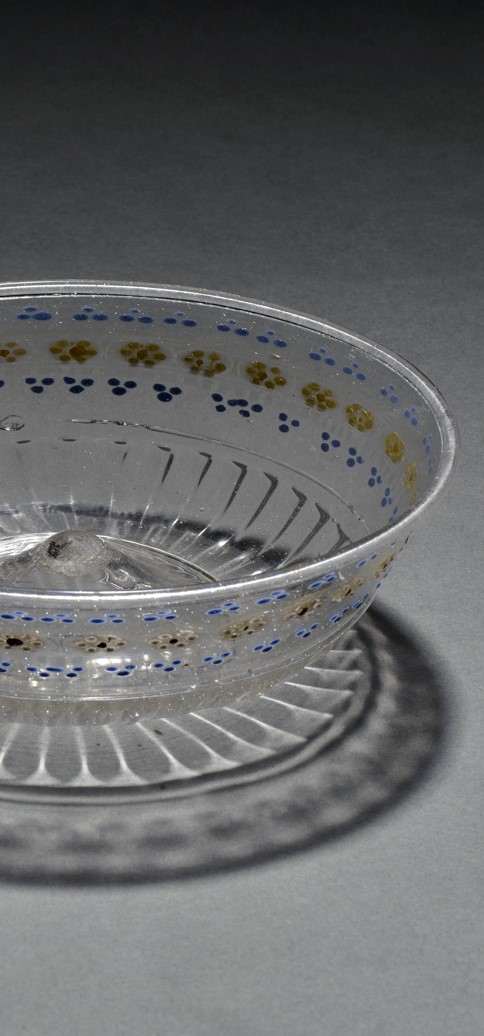
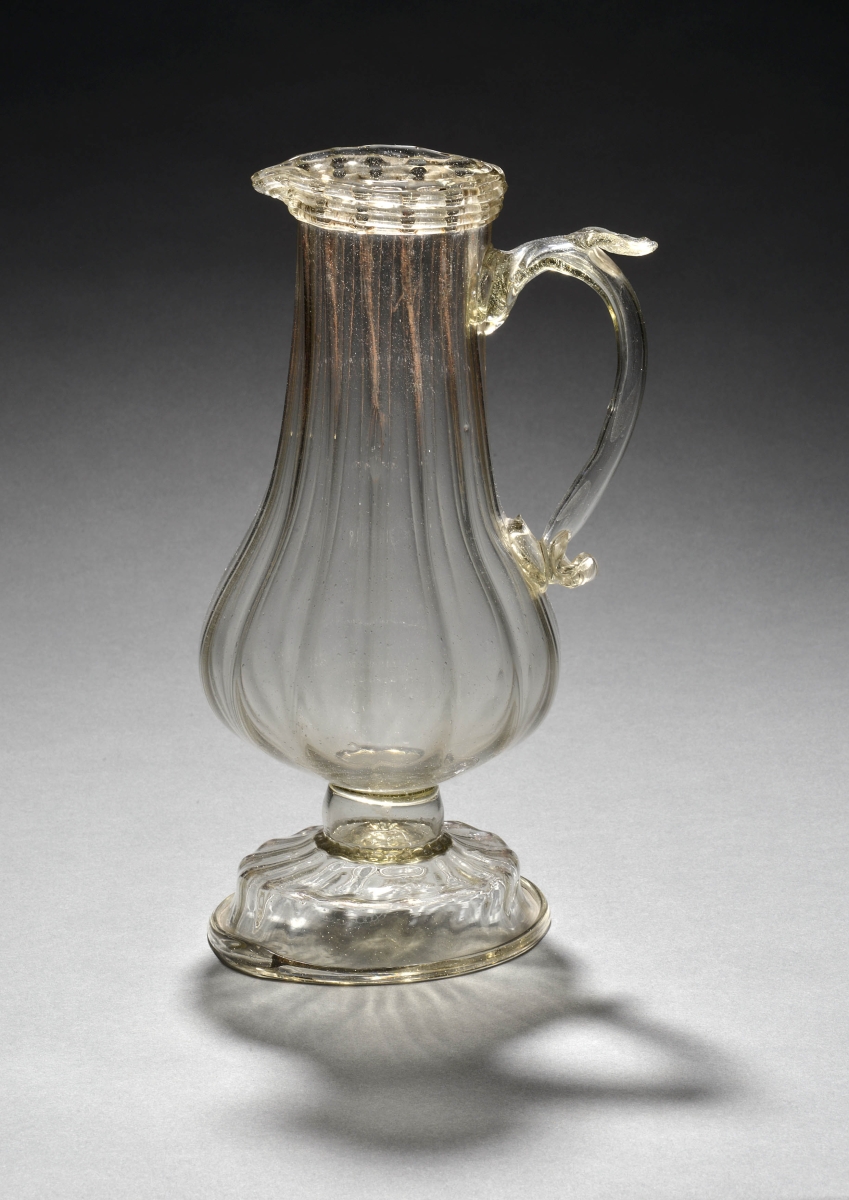
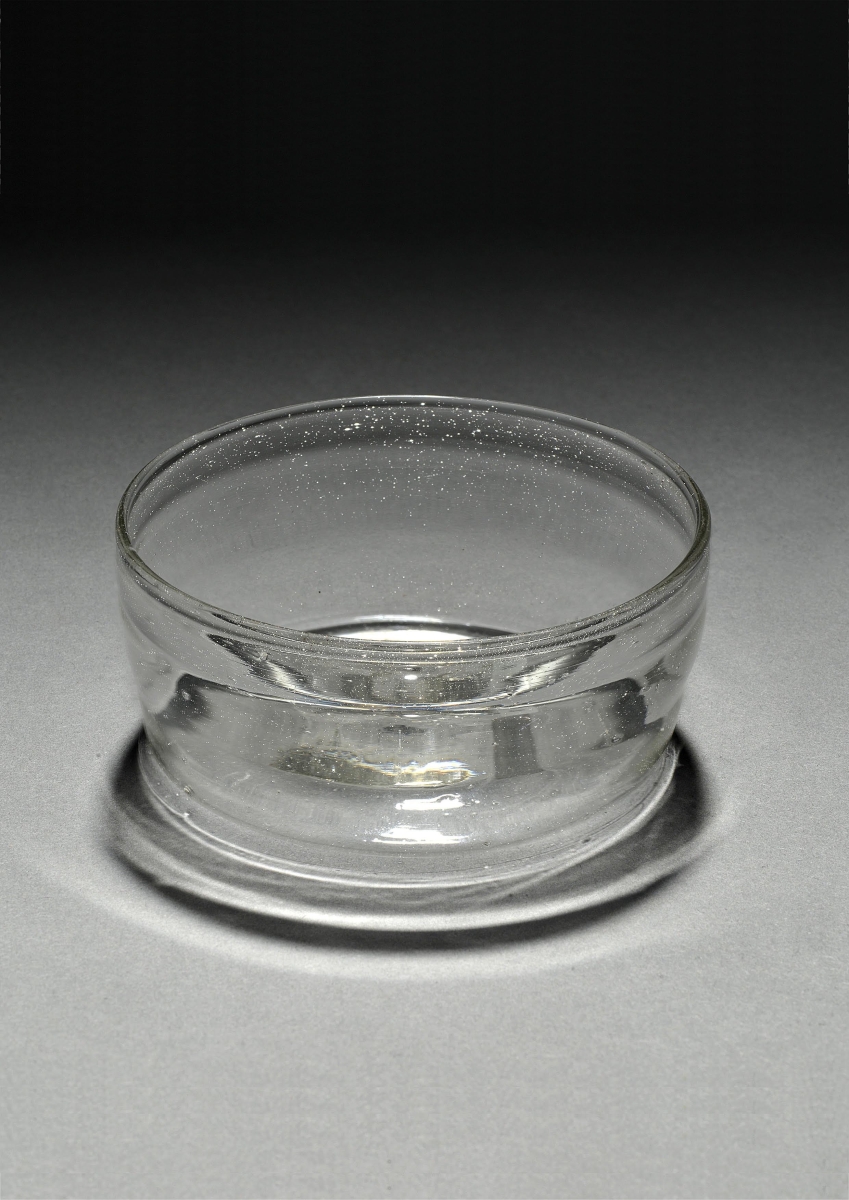
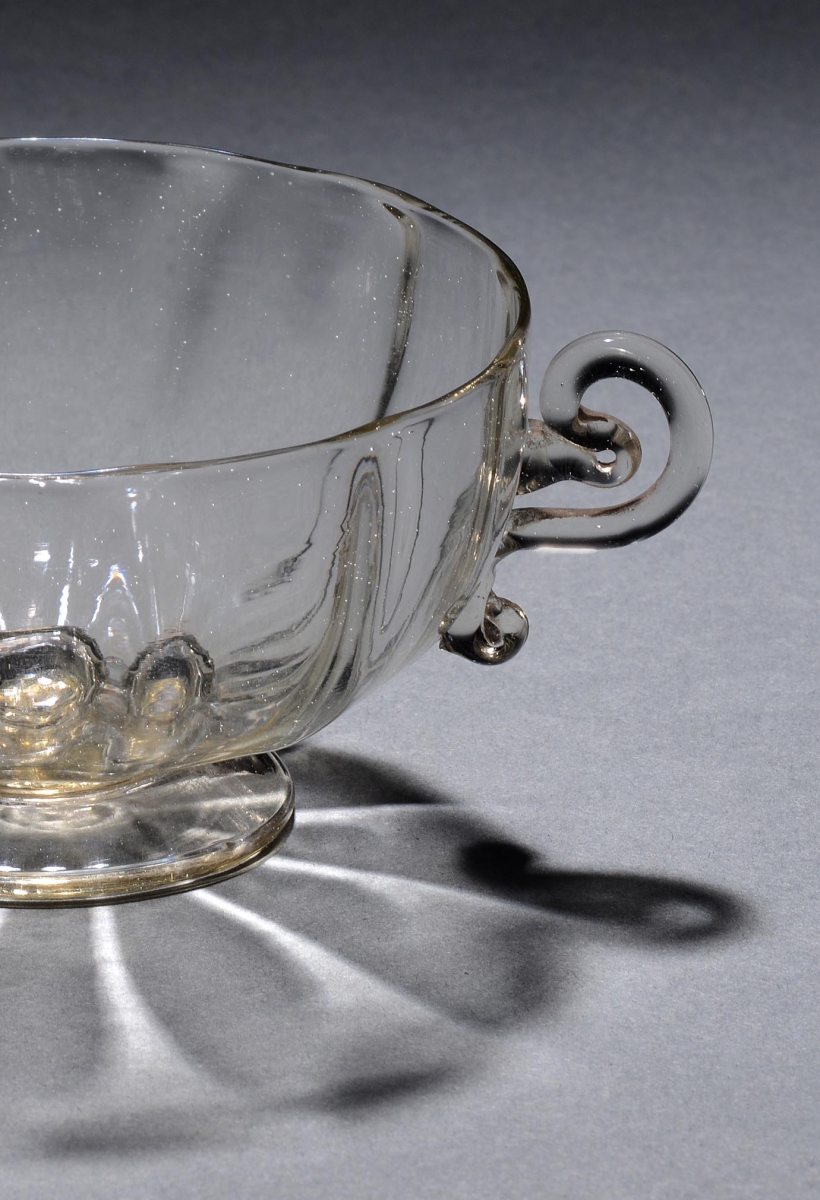
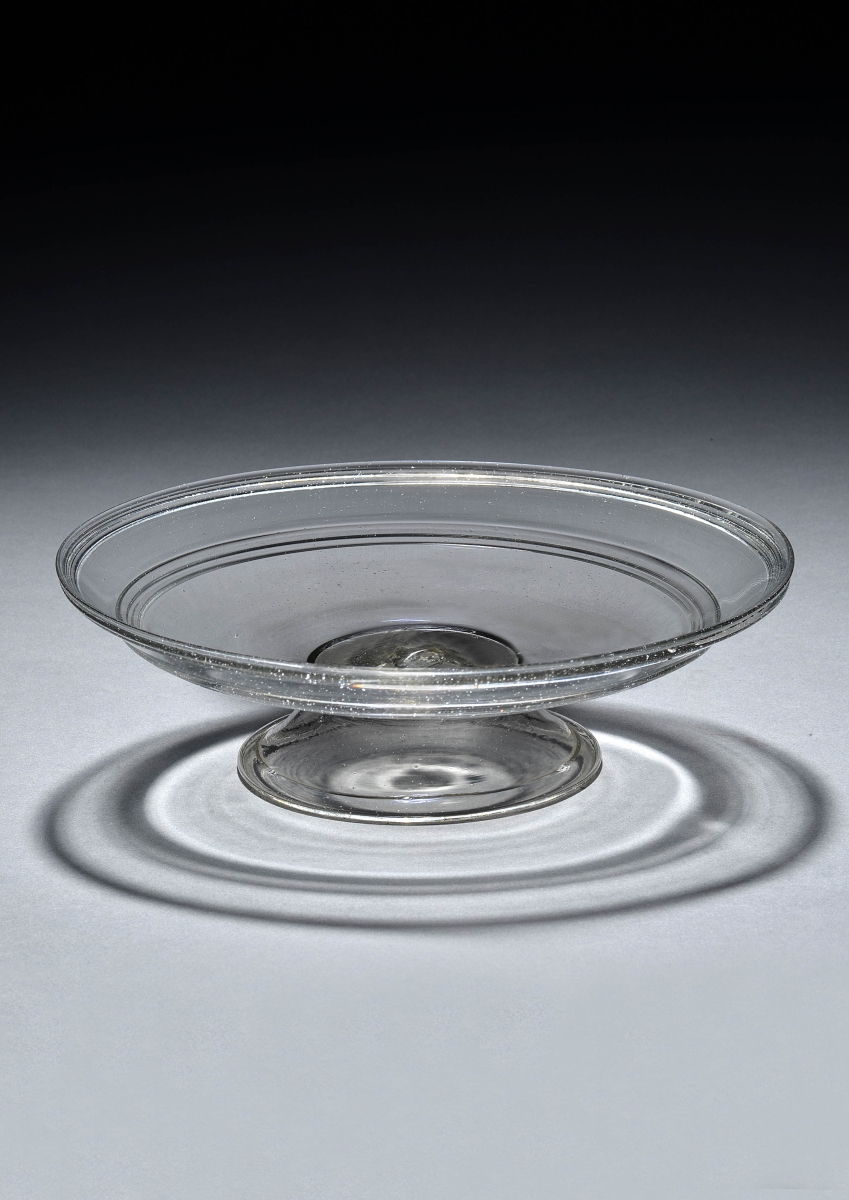
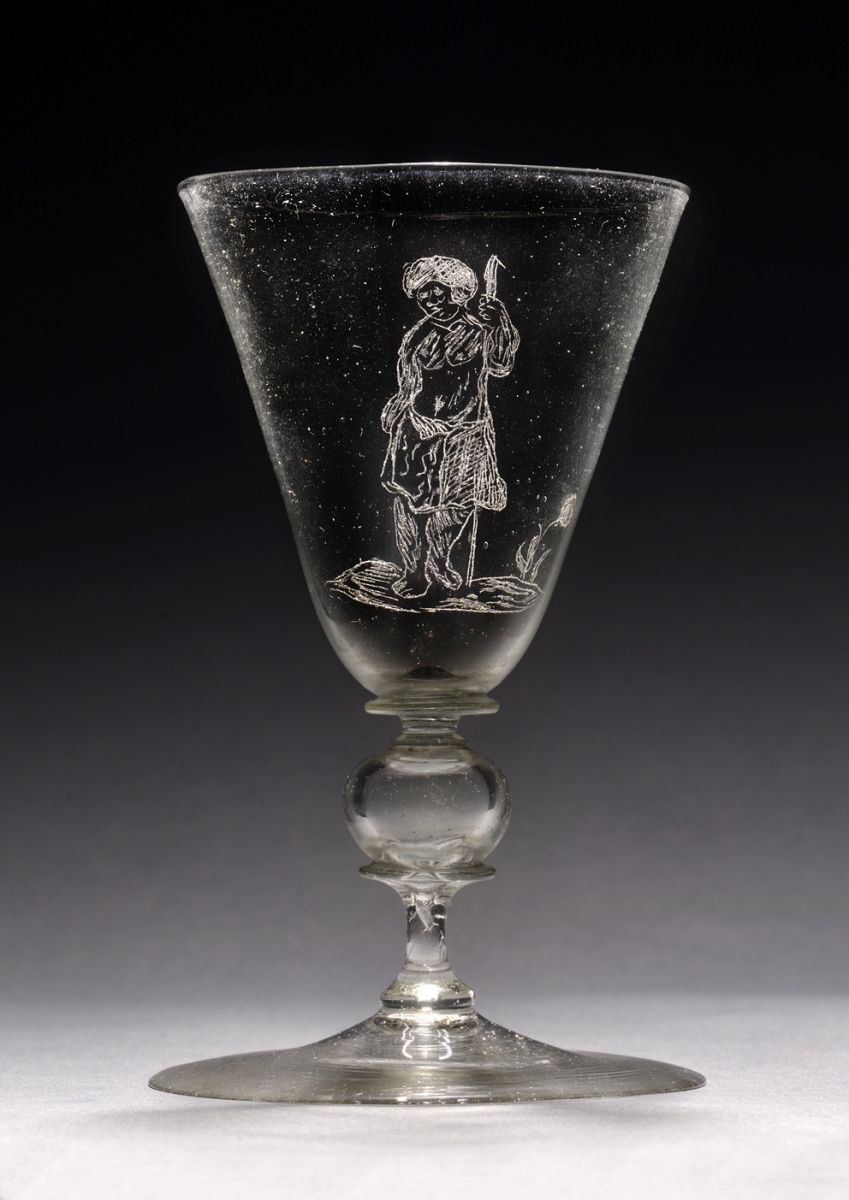
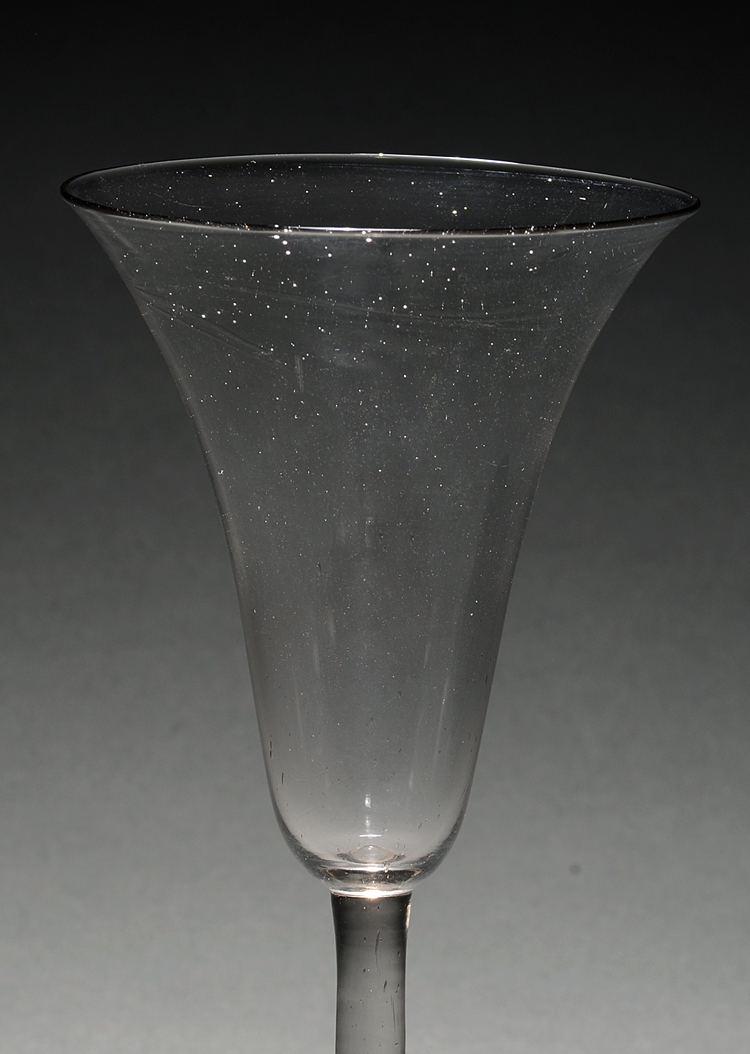


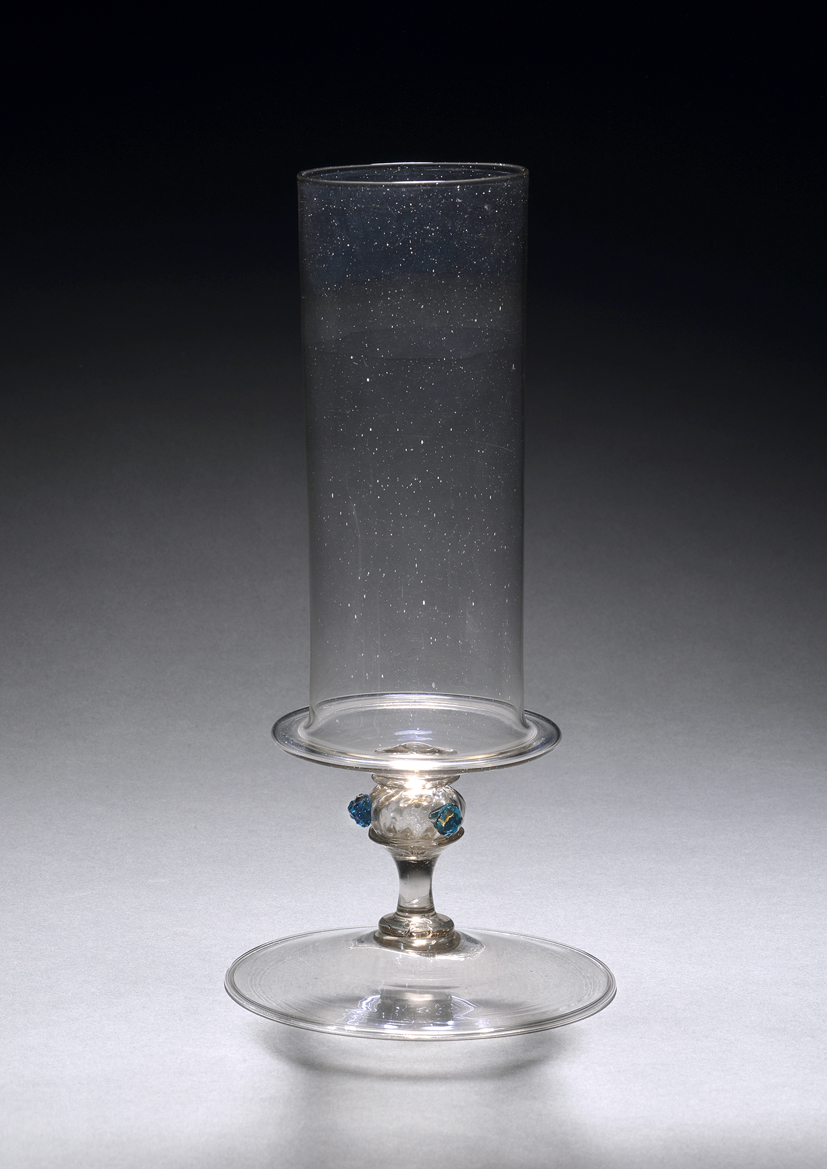
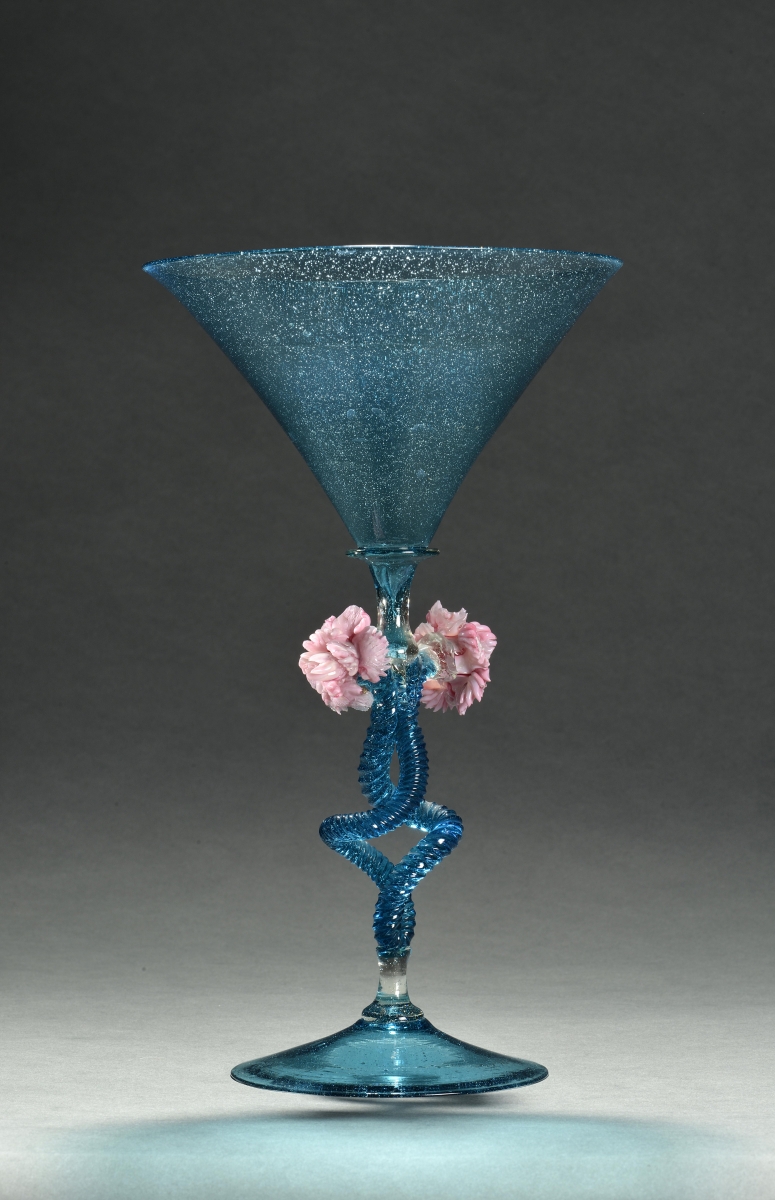
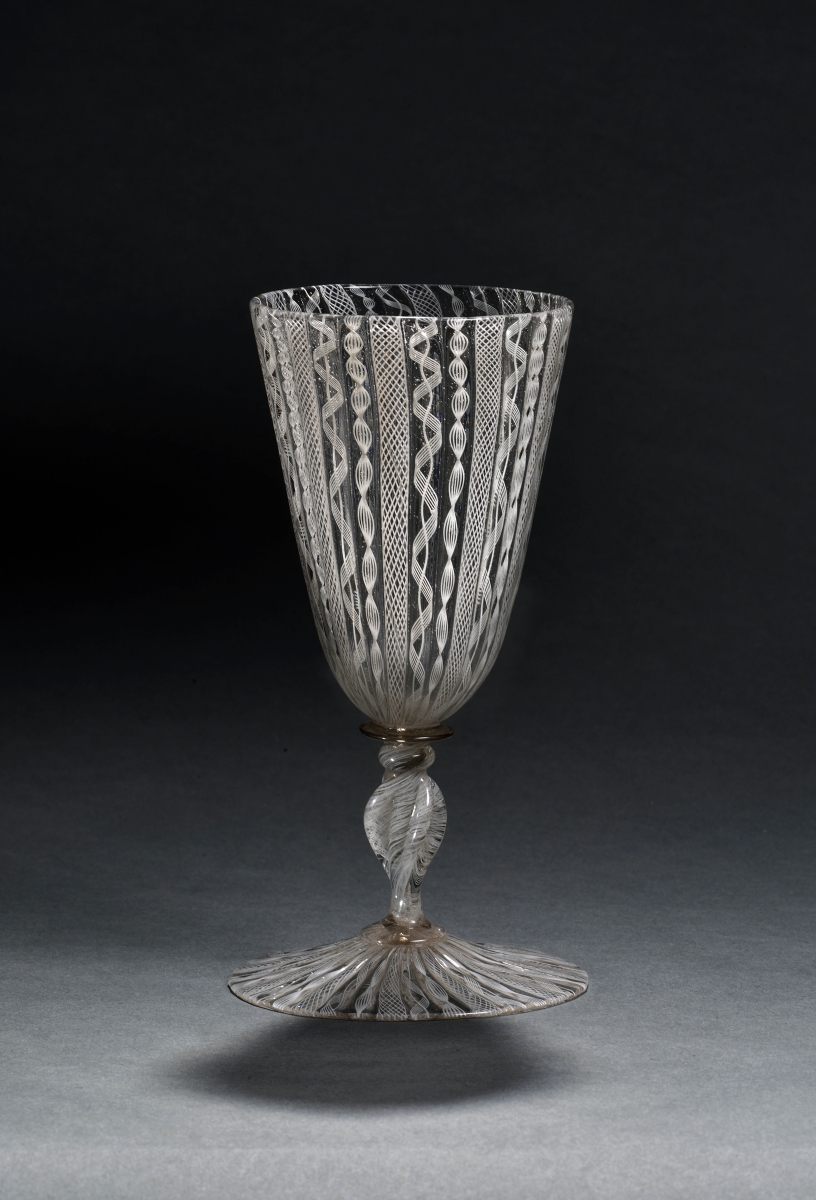
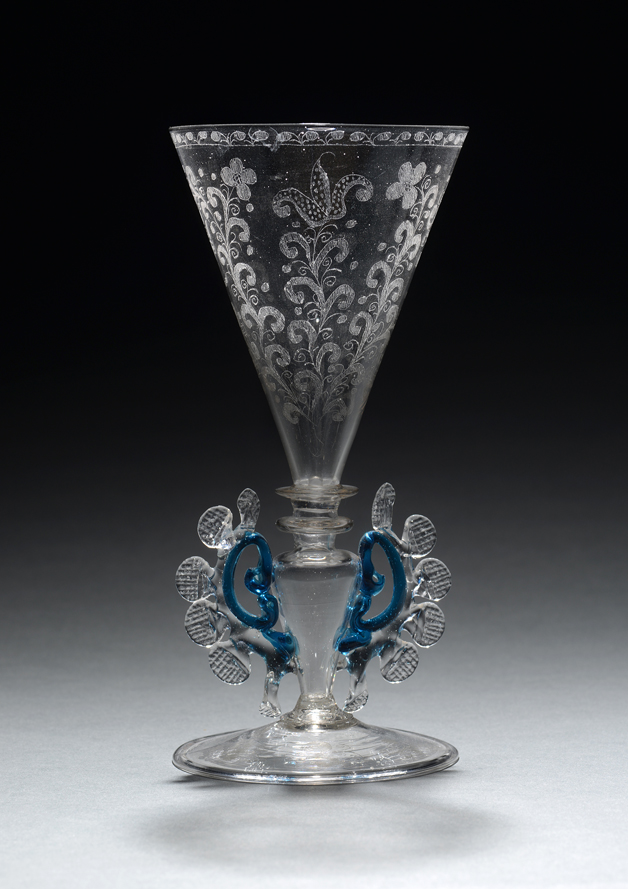
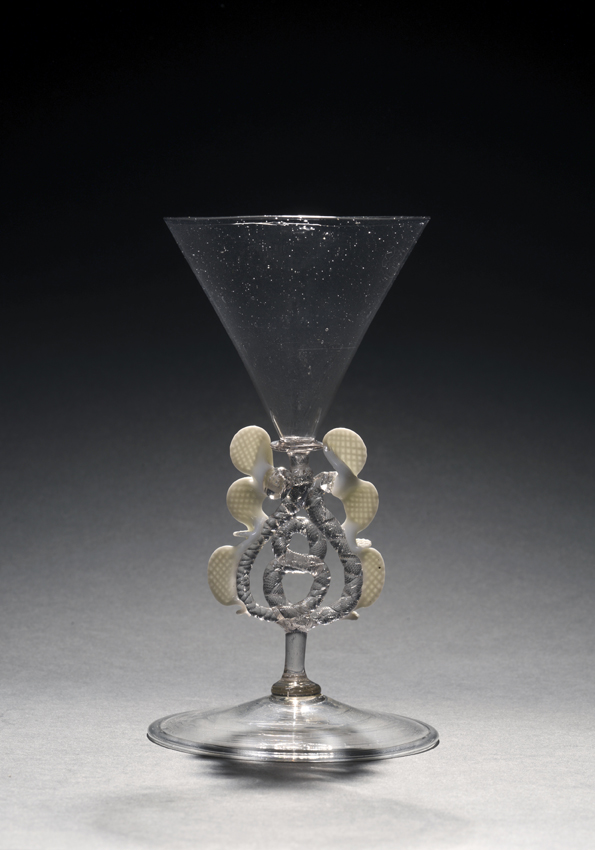

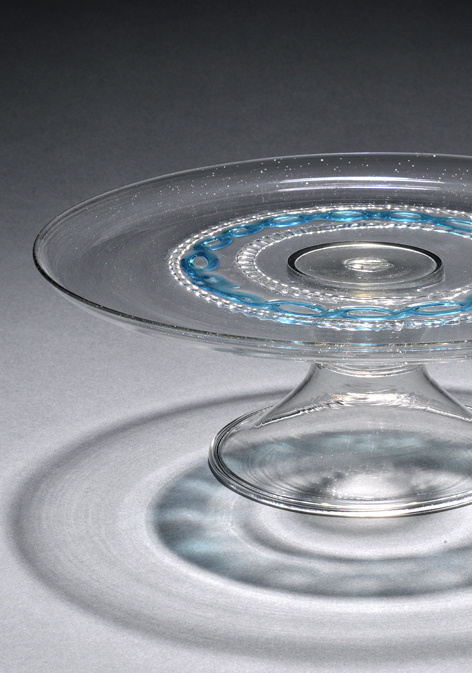
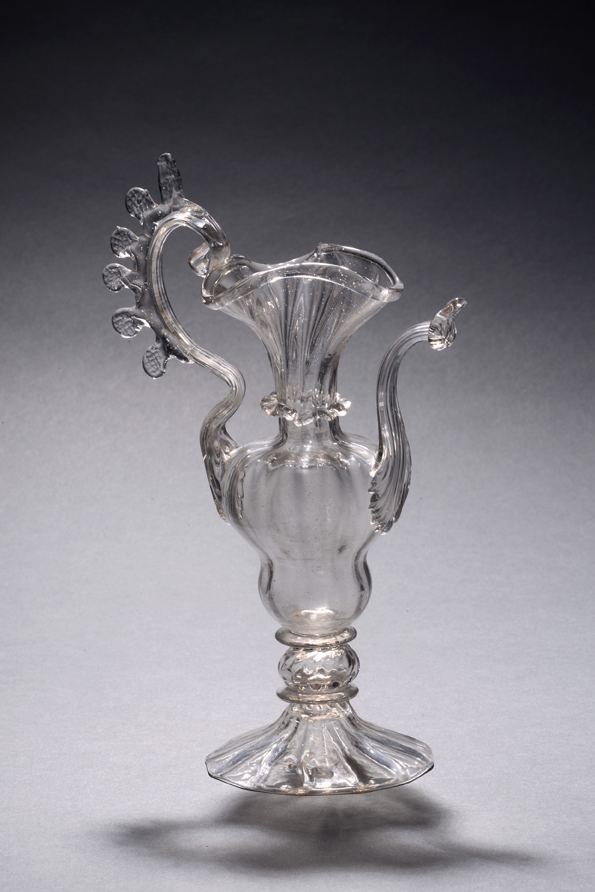
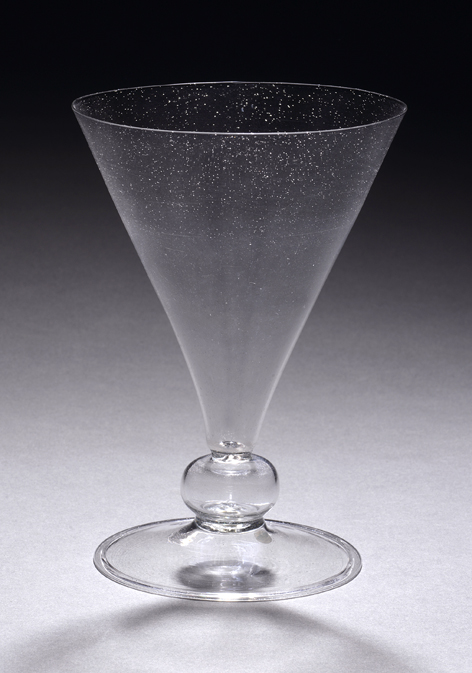


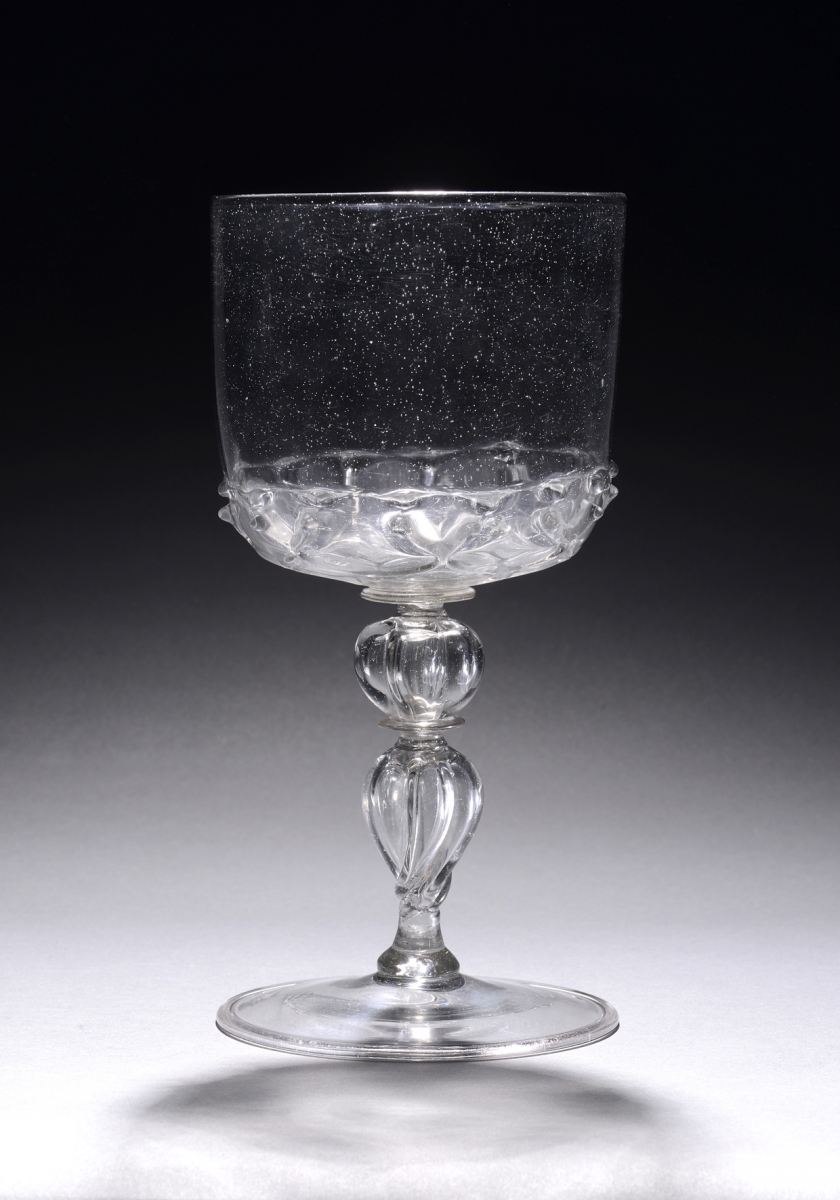

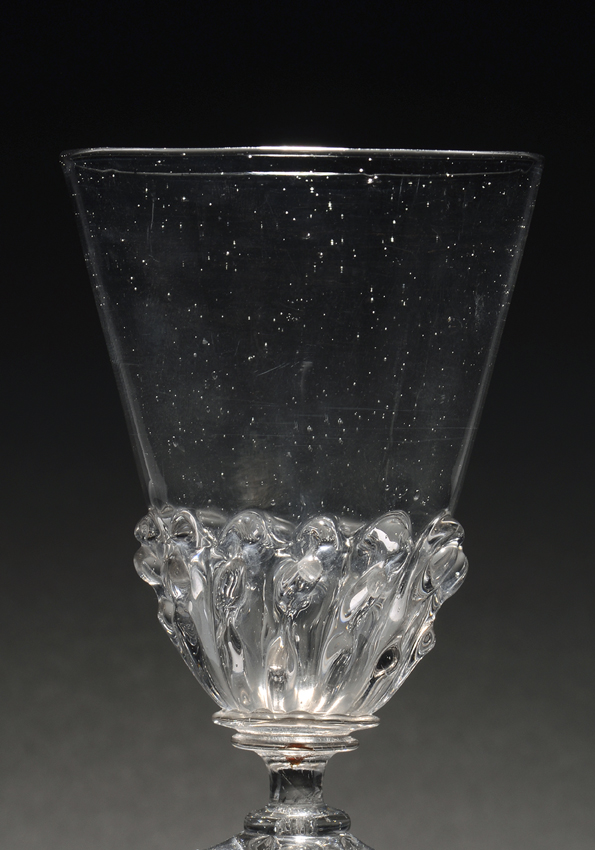


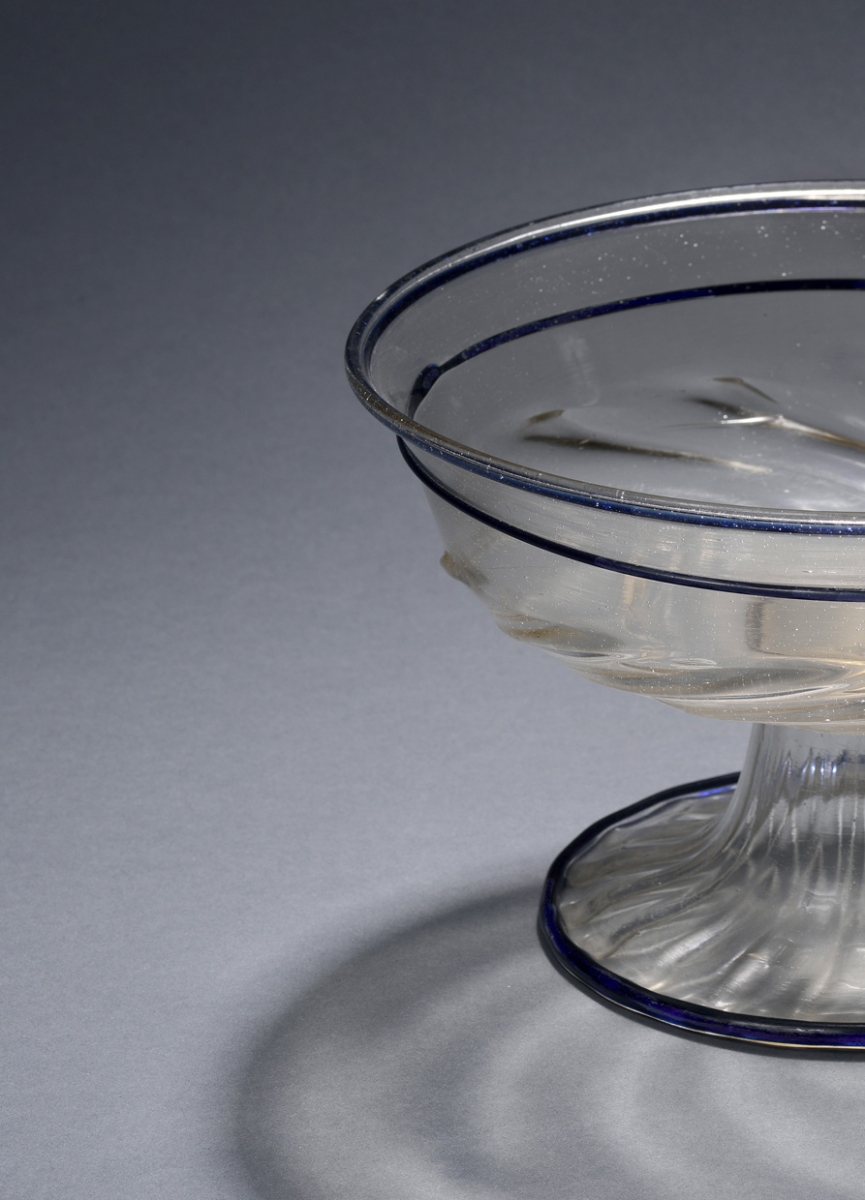
 NIEUWE SPIEGELSTRAAT 55
NIEUWE SPIEGELSTRAAT 55